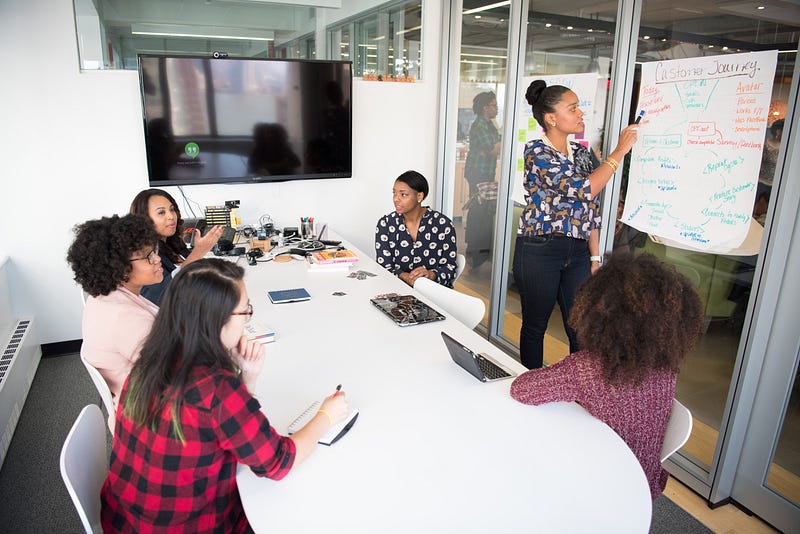How to successfully design for the end-user
Leading a design thinking workshop can completely transform your company for the better. According to the 71% of brands that champion design thinking, making a shift to a design-centered mindset will dramatically improve productivity and work ethic amongst your staff.

Are you ready to take your team to the next level?
If you’re ready to take your team to the next level by leading a design thinking workshop, it’s essential to know the basics of design thinking first. Having a deeper understanding of this human-centered approach will make it easier to get your team on board with this process.
In this article we’ll cover the basics of design thinking and the best way to approach leading a workshop for your team with the following topics:
- What is Design Thinking?
- A History of Design Methodology
- The Six Phases of Design Thinking
- Leading a Design Thinking Workshop
Understanding Design Thinking
Design thinking is a creative problem-solving method that centers on the needs of the end-user, by considering them first when creating products or services. When you authentically understand the wants and needs of the consumer, you can develop successful products and services they value and use to improve their lives.
Ultimately, a design thinking approach helps you understand the experience of the end-user by adopting the end user’s mindset and creating your product or service from this perspective.
A History of Design Thinking
The human-centered design process is an extension of the design thinking methodology. Though scientists, creatives, scholars, analysts, and engineers have studied this methodology for the past several years, the idea to apply a design mindset to problem-solving as a business strategy didn’t exist until the cognitive scientist and Nobel Prize laureate Herbert A. Simon coined the term in 1969. Simon explained the modern idea of design as an applicable way of thinking about business in his book, The Sciences of the Artificial.

Since Simon began the conversation about the design thinking methodology, many academic elites and experts have adopted this concept and expanded upon it. Yet one thing remains the same: the user should be at the core of any design process. The human-centered process is an exploration of how to accurately and innovatively create a product or service that satisfies consumers’ wants and needs.
“We must design for the way people behave, not for how we would wish them to behave.” –Donald A. Norman, Living with Complexity

The Six Phases of Design Thinking
Let’s take a look at the six phases of the human-centered design process to learn how to create with purpose as you prepare for leading a design thinking workshop.
1. Observe & Understand Users’ Behavior
The first phase of the design thinking process is to observe and understand the end user’s behavior to learn as much as possible about their needs. This allows you to better understand the people you are designing for as you approach problem-solving from their perspective. Doing so will allow you to deeply empathize with them and identify opportunities to better cater to and address these issues.
By identifying the end user’s behavioral patterns you’ll have a clearer understanding of what your customers enjoy and what they are dissatisfied with. This phase allows for greater innovation as you build trust and connect to your consumers.

2. Ideation
The ideation phase focuses on brainstorming new solutions based on what you learned by observing the end-user. Remember to stay focused on a human-centered design process while generating ideas. The use of divergent thinking is critical in this stage to foster creativity and generate as many ideas as possible.
In the ideation phase, everything is fair game. For example, instead of worrying about the details of how your potential ideas will work, focus on “why not?”
There are no right or wrong answers, only potential creative solutions to the problems you’ve identified. When you prioritize the needs and desires of the people you are creating for, you’ll arrive at the most successful solutions that you’ll continue to refine through the rest of the design thinking process.
3. Prototype
Now that you have potential solutions, it’s time to bring your best ideas to life with rapid prototypes. In this phase, you’ll test your ideas in real-time with real people to get their feedback. Rapid prototypes are quick and easy versions of the ideas you want to create. Their role is to ensure that your vision is on target and it allows you space to make amendments based on feedback before you make the final product.
This experimental phase isn’t about perfection. The goal is to create a quick, tangible prototype so that you can test it.

4. Feedback
In the feedback phase of the design process, you’ll test your prototype. This is perhaps the most vital part of the human-centered design process as it will determine whether or not your idea works for the people you are designing for.
Get your prototype in the hands of your target consumer and ask them: how and why does this product/service achieve or fail to reach your needs and desires? During this stage, you’ll want to collect as many details as possible from testers as you’ll use this feedback to finalize your solution.
5. Integration
The integration phase of the design thinking process helps you to identify the usefulness of the proposed solution. Consider the feedback you receive and how you can implement it into your design to make it better. This is a fluid process: integrate, test, and repeat until you reach the best version of your idea. Once your solution is fully-fledged and replicable, it’s time to share it.
6. Application
It’s time to send your idea out into the world! During this last stage of the design thinking process, make the final prototype and share it. It’s important to keep an eye on changes in your target audience and their needs and desires as time progresses so that you can make adaptations to your design as necessary.
With each new update, return to phase one and repeat the process for best results. Remember that the user’s needs change over time, so it is important to anticipate future alterations to best serve consumers’ changing needs.
Leading a Design Thinking Workshop
When we approach innovation with a human-centered design process, we are able to empathize with and therefore better understand the end-user and what they truly desire. Everything we create is an extension from t
When we approach innovation with a human-centered design process, we can empathize with and therefore better understand the end-user and what they truly desire. By leading a design thinking workshop, you’ll encourage your team to innovate in this human-centered way. As you create everything from this level of self-awareness, you’ll ultimately develop better products and services as you improve your company and team as well.
Once you have a clear understanding of the design thinking process, you’ll be able to lead your design thinking workshop with your team. Whether your design sprint is a few days or a few hours, a well-executed design thinking workshop will help you keep your customers’ needs top of mind.
Hiring a professional facilitator is one of the best ways to lead a design thinking workshop at your company. At Voltage Control, our team of facilitators is happy to assist you in your design thinking needs. With a clear understanding of this methodology and an effort to lead your team with the same mentality, you’re sure to see the benefits of adopting a design thinking approach.
Do you want to learn more about human-centered design?
Voltage Control facilitates design thinking workshops, innovation sessions, and Design Sprints. Please reach out at hello@voltagecontrol.com for a consultation.



